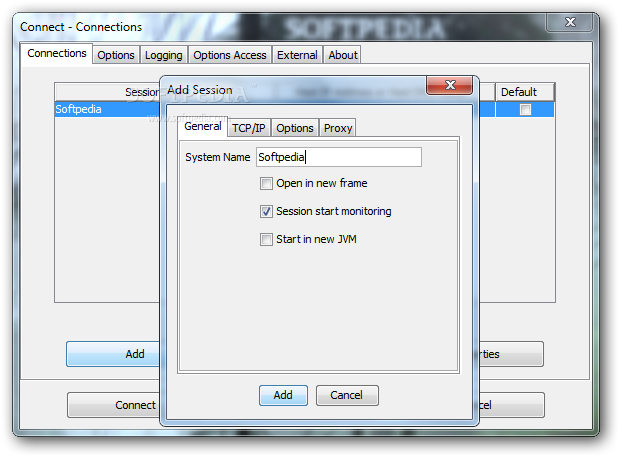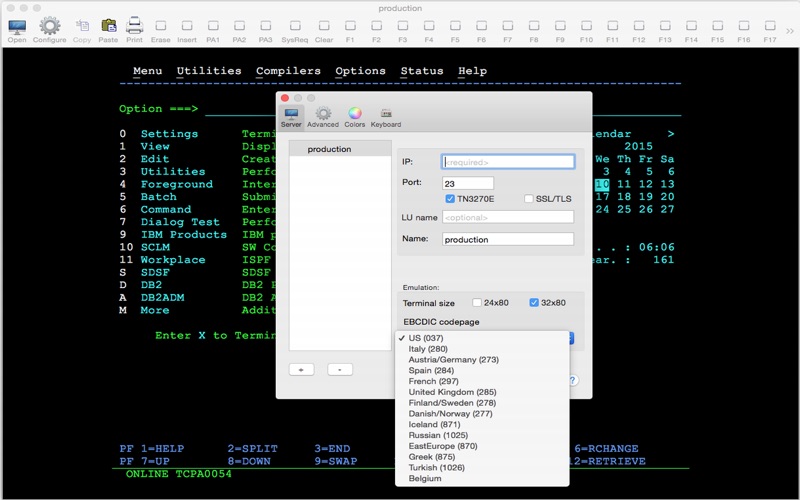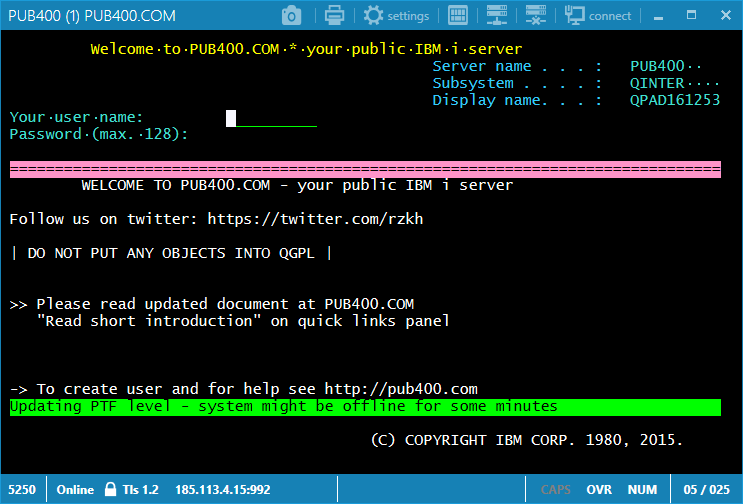

'Function Button' Box Key Mapping facility - for 'complex' mappings.
TN5250 WINDOWS 7 PC
With the Drag and Drop Key Mapping facility you can assign a key on your PC to perform the action of any (single) key on the terminal being emulated. Drag and Drop Key Mapping facility - for 'simple' mappings.PowerTerm supports three powerful and easy methods for mapping keys:."F12" buttons at the bottom of the PowerTerm window. Softkey The softkeys are the labelled "F1", "F2".Here are examples of programming them in a script:.

The label of the button must be double-quoted and the function of the button goes after the "send". You need to specify the row and column of the entry you want to program. PowerPad The PowerPad is setup like a grid.How do I program PowerPad and softkeys using PSL script?.Slave Printer Job Delimiter: When printing in slave mode, the job delimiter character that you select here will divide the data into print jobs instead of escape sequences arriving from the host application. Select the Graphics option from the dropdown list in order to print to a postscript printer. If you do not want to convert data, use the None option. Slave Printer Data Conversion: Converts data to IBM or Digital character sets for slave printing. Selecting the Graphics option will always send a print screen via the Print Manager in Graphics mode, regardless of the print device. If you do not want to convert data, use the None option, or select Graphics from the dropdown list to print in Graphics mode. Print Screen Data Conversion: Converts data to IBM or Digital character sets. This speeds up printing on a slow dot-matrix printer. Print Line Graphics As Text: Converts line graphics to text. Other: Use Form Feed: Adds a form feed (page eject) after each printing job, if you are printing to file.To add the data, click the Append option to create a new file, click the Overwrite option. You can do this using the File Creation parameters.
 Device: Device File Name: If a file of the same name exists, you can choose to add the new data to it, or to create a new file. Note: If you chose Print Manager or None as the option for Print Device, the Device File Name field will be disabled. Sends to the DOS file you type in the File Name text box. In the Device Name text box, you can also specify communication parameters. For example, this can be a device such as prn, lpt1, com1. Sends to the DOS device you designate in the Device Name text box. Sends to the standard Windows Print Manager, in text mode. Print Device: This option allows you to select a printing output channel. Select the required printer parameters. From the Terminal menu, select the Setup option. How do I configure PowerTerm for printing?. All screen data will be in the file whose name you supplied. When you want to stop capturing, run the Communication|Stop Receiving Ascii file menu. Press OK, and proceed with your terminal session. Choose the Ascii tab and input a filename into the text box. Run the Communication|Receive File menu. Simply use the Ascii File capture capability as follows: It is very easy to capture screen data to a file. How do I capture screen data to a text file?. When doing so - PowerTerm will automatically create a new private key in EPK format. The private key does not have to be *.epk file. Set "Private key file for authentication" to the exact location of the private key generated in step #1.
Device: Device File Name: If a file of the same name exists, you can choose to add the new data to it, or to create a new file. Note: If you chose Print Manager or None as the option for Print Device, the Device File Name field will be disabled. Sends to the DOS file you type in the File Name text box. In the Device Name text box, you can also specify communication parameters. For example, this can be a device such as prn, lpt1, com1. Sends to the DOS device you designate in the Device Name text box. Sends to the standard Windows Print Manager, in text mode. Print Device: This option allows you to select a printing output channel. Select the required printer parameters. From the Terminal menu, select the Setup option. How do I configure PowerTerm for printing?. All screen data will be in the file whose name you supplied. When you want to stop capturing, run the Communication|Stop Receiving Ascii file menu. Press OK, and proceed with your terminal session. Choose the Ascii tab and input a filename into the text box. Run the Communication|Receive File menu. Simply use the Ascii File capture capability as follows: It is very easy to capture screen data to a file. How do I capture screen data to a text file?. When doing so - PowerTerm will automatically create a new private key in EPK format. The private key does not have to be *.epk file. Set "Private key file for authentication" to the exact location of the private key generated in step #1. 
In PowerTerm`s "Connect" window: set the "security type" to "SSH" and click "Details". Add the content of the new public key to the "authorized keys" file on the host. Use an application like the "SSH-keygen" in order to generate a pair of keys: private key and public key. How do I configure PowerTerm to use private SSH keys to connect to the host?. ptw32.exe telnet.psl myhost where myhost is the name or IP address of the host system you are trying to connect to Important Note: If you see quote marks around the text on the target line, place the new words OUTSIDE of the quotes, so you will have a target such as "C:\Program Files\PTW32\ptw32.exe" telnet.psl myhost ptw32.exe At the end of this line, simply add `telnet.psl’ followed by the host you want to telnet to: example. Select the `Shortcut` tab and then modify the `Target` line. Right-click the icon and choose 'Properties'. Right-click on this item and choose `Create Shortcut`. Look for the PowerTerm executable, 'ptw32.exe'. Use "My Computer" or "Explorer" to view the PowerTerm Directory. How do I create a desktop shortcut to connect automatically (e.g., via Telnet)?.








 0 kommentar(er)
0 kommentar(er)
